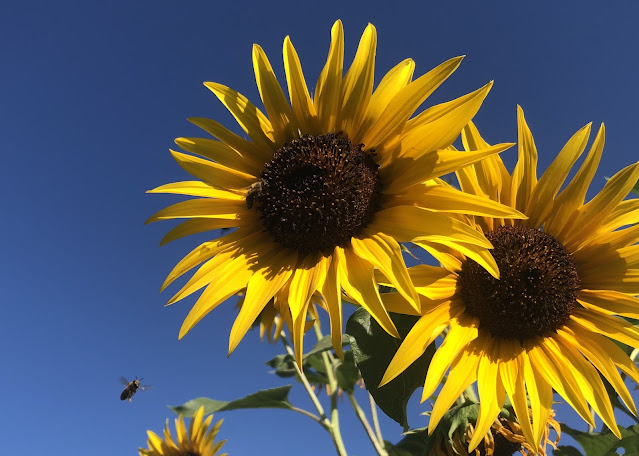

|
|
Yes, it'll continue to be warm and sunny this week, but the "dangerous" heat wave is waning. (Photo: Kathy Morrison)
|
It’s Sacramento, it’s August, it’s hot; what did you expect?
But this summer’s heat has been exceptional. The National Weather Service calls the current heat wave “dangerous.”
Relief may be on its way; we’re headed for more normal temperatures. Instead of scorching, the afternoons will be merely baking.
“Good news: After today, it will be slightly less hot,” tweeted the NWS Sacramento office on Saturday morning. “Not so great news: It will still be pretty warm.”
A heat advisory for the Sacramento Valley called for afternoon highs of 100 to 110 degrees on Saturday; the foothill forecast was 100 to 106.
Expect a big change Sunday. After an expected high of 106 Saturday in downtown Sacramento, the weather service forecasts a dip down to 93 degrees Sunday. Normal for late August: 94.
Temperatures will spike back up to around 100 on Tuesday and Wednesday, then settle down into the mid 90s again, predicts the weather service. Helping those “cooler” days? Lower overnight temperatures, brushing 60 degrees.
That means mornings will be perfect for gardening this week. Take care of chores before 10 a.m.
* Prepare for a fall full of flowers by paying a little extra attention to your garden. Cut off spent blooms from roses, annuals and perennials, then give them a boost of fertilizer. Make sure to water plants before feeding. Roses will rebloom about six to eight weeks after deadheading.
* Harvest tomatoes, beans, squash, pepper and eggplants to prompt plants to keep producing. Give your plants a deep watering twice a week, more if planted in containers. Also, give them a boost with phosphate-rich fertilizer to help fruiting.
* Watch out for caterpillars and hornworms in the vegetable garden. They can strip a plant bare in one day. Pick them off plants by hand in early morning or late afternoon.
* Indoors, start seedlings for fall vegetable planting, including bunching onion, cabbage, broccoli, cauliflower, kale, radicchio and lettuce.
* Sow seeds of perennials in pots for fall planting including yarrow, coneflower and salvia.
* In the garden, direct-seed beets, carrots, leaf lettuce and turnips.
* Plant potatoes.
* Feed citrus trees their last round of fertilizer for the year. This will give a boost to the fruit that’s now forming.
* Camellia leaves looking a little yellow? Feed them some chelated iron. That goes for azaleas and gardenias, too.
* Pick up after your fruit trees. Clean up debris and dropped fruit; this cuts down on insects and prevents the spread of brown rot. Then feed fruit trees with slow-release fertilizer for better production for next year.
Comments
0 comments have been posted.Sacramento Digs Gardening to your inbox.
Sites We Like
Garden Checklist for week of July 21
Your garden needs you!
* Keep your vegetable garden watered, mulched and weeded. Water before 8 a.m. to reduce the chance of fungal infection and to conserve moisture.
* Feed vegetable plants bone meal, rock phosphate or other fertilizers high in phosphate to stimulate more blooms and fruiting. (But wait until daily high temperatures drop out of the 100s.)
* Don’t let tomatoes wilt or dry out completely. Give tomatoes a deep watering two to three times a week.
* Harvest vegetables promptly to encourage plants to produce more. Squash especially tends to grow rapidly in hot weather. Keep an eye on zucchini.
* Pinch back chrysanthemums for bushy plants and more flowers in September.
* Remove spent flowers from roses, daylilies and other bloomers as they finish flowering.
* Pinch off blooms from basil so the plant will grow more leaves.
* Cut back lavender after flowering to promote a second bloom.
* It's not too late to add a splash of color. Plant petunias, snapdragons, zinnias and marigolds.
* From seed, plant corn, pumpkins, radishes, winter squash and sunflowers.